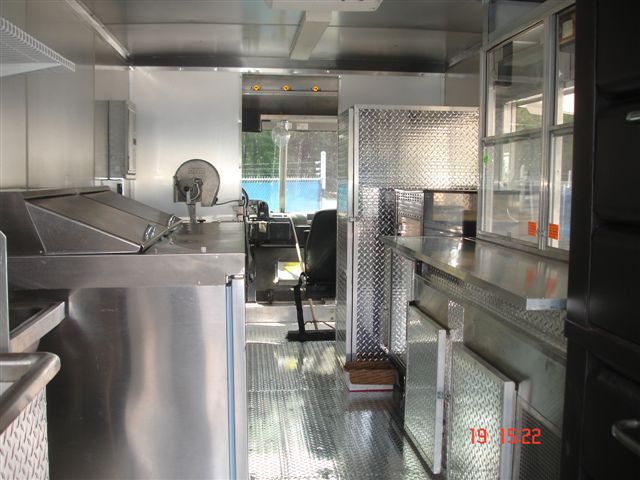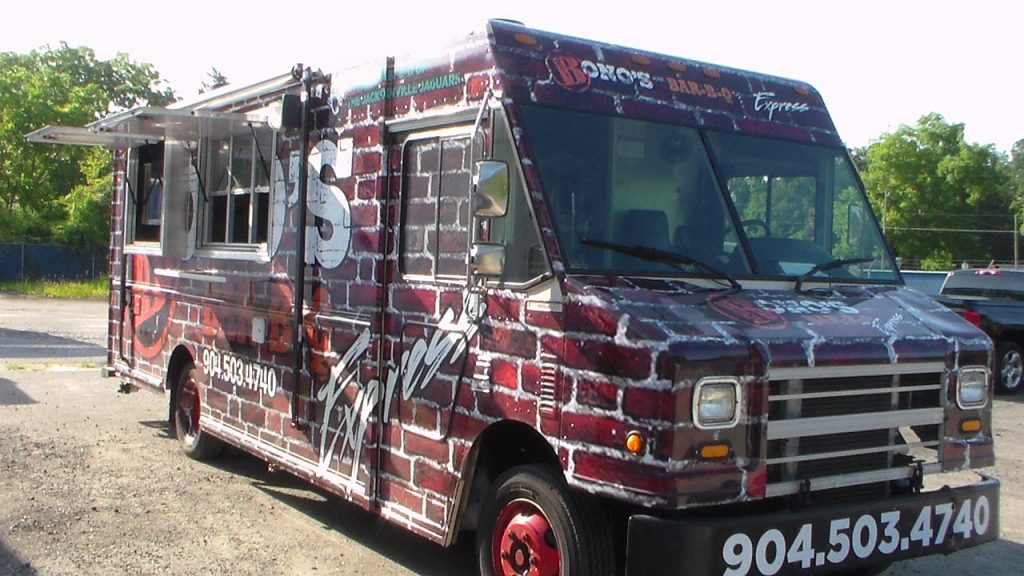Researching the best type of flooring install inside your food truck or concession trailer? In today’s post, we address everything you need to consider before investing in the floor of your food truck. In addition to sharing the best options, we layout some of pitfalls to watch out for with the most popular food truck flooring types.
At M&R Specialty Trailers and Trucks, we’ve been manufacturing concession trailers for over 15 years and have worked on literally hundreds of concession units during this time frame. After working on so many of these units and even making repairs to concession trailers from other manufacturers, we’ve seen it all in terms of good and bad with food truck builds. These are the most important food truck floor considerations based on our years of experience.
Popular Option #1: Aluminum Tread Plating
If you’ve browsed other online food truck build photos, you’ve no doubt seen photos of glistening mobile kitchens. These images feature spotless kitchens, all brand-new stainless steel kitchen equipment, and floors you could literally eat off of they’re so shiny and clean. These types of floors usually have aluminum tread plating installed on the floors.

Example of the interior of a brand new mobile kitchen build using aluminum tread plating.
We’re happy to build interior kitchens using this type of plating and it can work well, but there are considerations you should know about before making a final decision.
First, your floors will never look as clean as the day the concession unit rolls out of the manufacturing facility. Mobile kitchens are not sterile environments that will remain in pristine condition and untouched like you’ll find in promotional photos.
Soon you’ll be taking your kitchen on the road, cooking and generating sales with the unit. This means you’ll be moving back and forth throughout the kitchen, rolling inventory across the floor, dropping things, and food will inevitably hit the floor. The flooring will continue to do it’s job, but it’s important to keep in mind that pristine look of the shiny aluminum floor won’t last forever!
The other consideration is if you plan to sell a lot of deep-fried products. If you do, you can expect a certain amount of grease to make it on the floors and create a slippery surface. Slippery kitchen floors can be extremely dangerous and a potential hazard to employees. The aluminum plating installed does have have tread, which will helps reduce risk of slipping. But this remains an important safety consideration that a business owner should be aware of.

BBQ food truck built by M&R Specialty Trailers and Trucks
Common Installation Mistakes
Assuming you want to move forward with aluminum plating for floors there are manufacturing considerations you need to consider as well. With aluminum tread plating you need to install sheets or pieces that fit the exact size of your floor. When you layer sheets there is the opportunity to create moisture in the gaps if your not extremely detail oriented. Moisture from water or grease is not good.
Installing a floor correctly is a skill that does take time and repetition to master. One way we ensure all moisture and air pockets are removed from the floor is to install each plate using a 100+ pound roller. This helps smooth out any air pockets or bubbles that might exist. During the installation, you also need to make sure you’re using the right type of glue and applying it at the correct temperature. If you’re applying these floors in an environment that isn’t temperature controlled (too hot or too cold) there will be problems.
We can’t stress enough the importance of installing these sheets correctly to prevent bacteria and other bad stuff from seeping into the floors. If these sheets are installed incorrectly, moisture or bacteria can eventually rot out the floor of your truck.
More than one concession unit originally built by another manufacture has been brought to us for repairs due to this vary reason. The challenge as a food truck vendor is that your flooring might appear to be in sound condition for months or over a year before you discover there’s a problem.
Popular Option #2: Black Rubber Floor
Our recommendation for food truck flooring is to use a rubber floor. There are a few distinct advantages to using a rubber floor versus aluminum plating. First, you can have a rubber floor created to the exact specs and layout of your concession unit. This means your floor is applied on one piece meaning there’s almost no chance for air or moisture to get past the protective barrier.
Aside from your floors being better protected, these rubber floors lock out grease, water, or anything else you can throw at them. You’re also less likely to slip on these surfaces compared to aluminum floors. Finally, this material is better suited for normal wear of food truck operations. The rubber material can handle anything you throw at it during a regular service.
You can choose a different color options for your rubber floors, but most people prefer black. Overall, we feel rubber floors are a more practical option for most food truck vendors. If you want to learn about the optimal floor size in a food truck, read our related post on the topic.
One last point is that from a cost perspective, both aluminum and rubber floors are about the same price so there’s no real cost savings to be had either way. If you have additional questions about building a mobile food unit or flooring specifically, drop us a line or give us a call at 904-397-0246. We’re happy to help answer any questions you may have about the custom build process.
